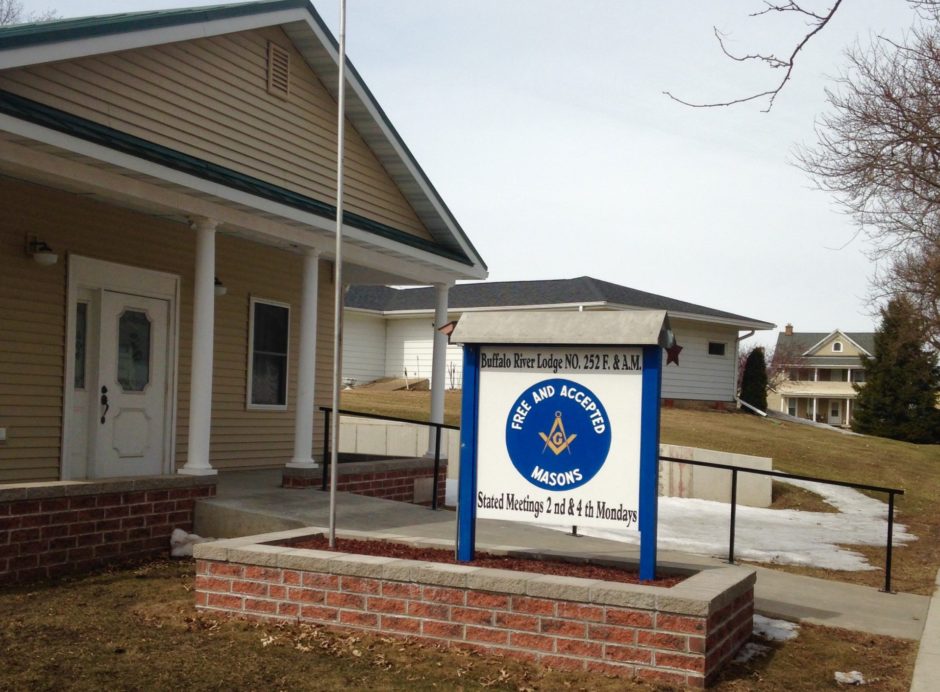The Origins of Scottish Freemasonry
(A brief summary)
There is little doubt that in the 15th century craftsmen had real grievances with merchants, who hired their services, and the local town councils. With differing success they formed associations of their own which sometimes appeared to be so menacing that laws were passed restricting their activities. Notwithstanding these laws, by 1475, the Masons and Wrights of Edinburgh were strong enough to secure a ‘Seal of Cause’ or Charter from the city of Edinburgh authorities.
This created an Incorporation, roughly equivalent to an English Trade Guild, which laid down rules for the governance of the Craft. In 1489, Coopers were included and later other groups of tradesmen joined. These incorporations framed rules, resolved trade differences, dispensed charity and controlled entry to the trade. Such incorporations were not unusual in Scottish Burghs and most of the larger trades and crafts had an incorporation. Examples of such ‘incorporated trades’ include: Wobsters (weavers), Cordiners (shoemakers), Baxters (bakers), and Hammermen (metal workers). The essential difference between the craft of stone masonry and these other crafts and trades was that stones masons had another level of organisation – the Lodge. Thus we find, in 1491, that the Edinburgh authorities granted the masons the right ‘to gett a recreation in the commoun luge’. This shows that masons used the Lodge for something much more than storing their working tools. The existence of Lodges in Scotland is known, therefore, from at least the 15th century but little can be said regarding the activities of masons. It is likely that Lodges were not organised on a rigid, formal, basis but that meetings were called as and when necessary. The reasons why another level of organisation was required raises many interesting questions.
In 1583, William Schaw was appointed by King James VI as Master of the Work and Warden General with the Commission of re-organising the Masonic craft.
In 1598, he issued the first of the now famous Schaw Statutes which set out the duties of all members to the Lodge and to the public. It also imposed penalties for unsatisfactory work and inadequate safety during work. More importantly, for Freemasons today, Schaw drew up a second Statute in 1599. The importance of this document lies in the fact that it makes the first, veiled, reference to the existence of esoteric knowledge within the craft of stone masonry. It also reveals that The Mother Lodge of Scotland, Lodge Mother Kilwinning, No.0, was in existence, and active, at that time. The impact of these statutes was dramatic. His instructions, to all LODGES (not incorporations), that they must begin to keep written records, meet at specific times, test, annually, members in the ‘Art of Memory’ and enter apprentices in the Lodge records meant that Lodges became fixed, permanent, institutions.
It is also why the earliest known masonic records date from this time. (See the page dealing with the ‘400th anniversary ‘). It can safely be said, therefore, that William Schaw was the founding father of modern Freemasonry. In the late 16th and early 17th Centuries important men, who were not Masons to trade, were admitted to Scottish Lodges. Exactly why such men were attracted to Scottish Freemasonry is not known. It may have been simple curiosity. In any event their social position gave Lodges an element of legitimacy and status. Others joined as literacy and education spread throughout the country which assisted Lodges to maintain funds. It is often said that Sir Robert Moray was the first known non-operative member of a Lodge. Whilst important, (he was the first to be recorded as being initiated on English soil) his initiation, in 1641, was not the first initiation of a non-stonemason into a Lodge. Others who preceded him probably include: William Schaw himself, and his assistant, James Boswell of Auchinleck. They are believed to have been initiated in 1598.
In 1634, William, Lord Alexander, his brother, Anthony Alexander and Sir Alexander Strachen of Thornton were initiated in The Lodge of Edinburgh (Mary’s Chapel), No.1. These men were some of the first non-operative stone masons to join Scottish Lodges.
From Schaw to the early 18th Century, masonry underwent a change. Schaw had legislated for operative masons but by the early 18th Century Freemasonry was being led, mainly, by the new non-operative masons and it was this group which was to develop and expand within the Lodges. It seems that only the degrees of Entered Apprentice and Fellow Craft were worked in Scotland during the 16th, 17th and early 18th centuries.
The earliest known record of the degree of Master Mason, being conferred in a Lodge, is to be found in the minutes, dated 29th January 1726, of Dumbarton Kilwinning Lodge, No.18.
The Mark degree is recorded as early as 7th July 1778 in the minutes of Lodge St John Operative, No.92.
The Ceremony of Installed Master is of recent origin being introduced in 1858 and in 1872 revised to the form used today.
In 1717, the Grand Lodge of England was formed and three years later the Grand Lodge of Ireland. In 1735, four Scottish Lodges discussed the possibility of forming a Grand Lodge of Scotland. On the 30th November of the following year representatives from thirty three Lodges met in Edinburgh. Grand Lodge was formed and William St Clair of Roslin was elected the first Grand Master Mason. The St Clair family had had long connection with Masons having in earlier days been Patrons of the Craft.
From 1736, Grand Lodge chartered a steady stream of Lodges and even in 1745, the year ‘Bonnie Prince Charlie’ attempted to regain the throne of his ancestors, five charters were issued despite the unsettled conditions.
In 1747, Grand Lodge issued the first charter to an overseas Lodge situated in Aleppo in Syria. With a large number of Lodge members serving in the overseas army, Grand Lodge issued a few (England and Ireland issued many) ‘travelling’ Charters to military regiments and these must be given credit for spreading Freemasonry in the countries where the army served. Some of these Lodges exist still although they are now ‘stationary’.
Mother Kilwinning, an old and independent Lodge, along with the Lodges it had chartered and which were still operating, returned to Grand Lodge following the 1807 Agreement. The numbering of Lodges was first undertaken in 1737, it was revised in 1771, 1816, 1822 and finally in 1826 after the admission of the Mother Kilwinning Lodges, and these are the numbers used today. A few independent Lodges joining up since have had a number inserted without altering the basic number of the other Lodges. The last being in 1891 when the Lodge of Melrose St John joined the Grand Lodge of Scotland and was numbered as 12
Membership and the number of Lodges increased in the 19th and early 20th centuries, especially during or after war or unsettled times. The increase in the number of Lodges placed a heavy supervisory role on Grand Lodge. Geographical groupings of Lodges were made and Provincial Grand Lodges formed in Scotland and District Grand Lodges overseas to supervise all the Lodges in their immediate area.
Following the granting of independence to countries such as Egypt, the United States of America, Canada, and Australia, the Lodges in these areas formed Grand Lodges of their own and were joined by many Scottish Lodges already established in those countries.
From 1598, benevolence was the responsibility of local Lodges but in 1846 Grand Lodge established the Fund of Scottish Masonic Benevolence, primarily for Scottish Freemasons and their dependants. Heavy demands on the Fund, due to the recession in 1875, led to the establishment of the General Annuity Fund in 1888. This was boosted by the proceeds of the Grand Bazaar of 1891 amounting to £14,400, a very large sum in those days.
In 1899, Grand Lodge decided that the collection taken at the Annual Installation Meeting of each Lodge would be added to this Fund. To celebrate the centenary of the Fund of Scottish Benevolence in 1946, it was decided to have a Home, initially for elderly Freemasons and their wives, and Ault Wharrie in Dunblane was purchased in 1950. Since then, further homes have been built with an emphasis on smaller homes in convenient parts of the country to meet the demand from our older brethren and their wives who wish to continue to live near their friends, relatives and their Lodges. While these are homes administered and maintained by Grand Lodge, there are homes also financed by the Provincial Grand Lodge of Ayrshire and our District Grand Lodges abroad. Those who have visited these homes report very favourably upon the facilities they provide.
Scottish Freemasonry is in good heart. At the last count there were 665 active Lodges in Scotland and 499 overseas.


